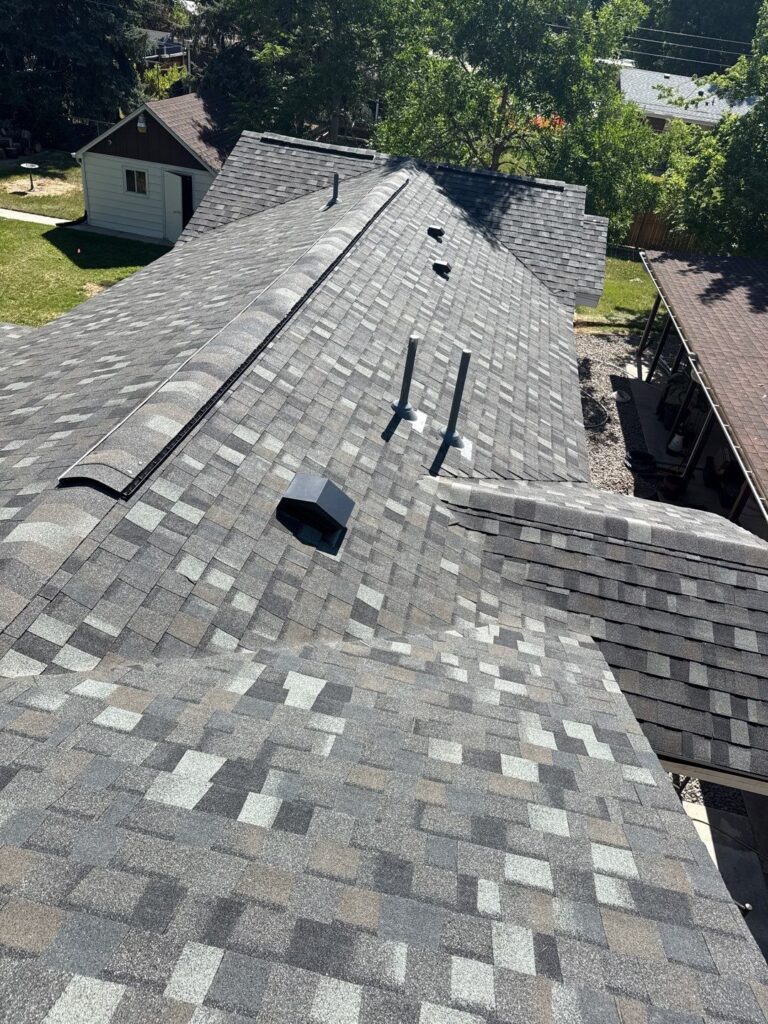
Spring in Denver, Colorado, brings a perfect window of opportunity to address your roof’s condition after enduring the harsh winter months. Proactive homeowners and commercial property managers understand that consistent, seasonal maintenance is critical to preserving the integrity of the roof structure and avoiding costly repairs down the road. This guide offers a thorough and effective approach to spring roof care, combining actionable strategies and industry insight from trusted roofing professionals.
1. Clear and Inspect All Drainage Systems
A functioning drainage system is vital for protecting your property from water intrusion and structural damage. Begin by thoroughly clearing gutters, downspouts, and roof drains. Leaves, pine needles, and other debris should be removed entirely to allow unobstructed water flow.
Take time to visually inspect joints and downspout connections. Loose brackets or detachment at key points can lead to water backup, causing rot at the fascia, soffits, or even infiltration into interior walls. For buildings with flat or low-slope roofs, ensure scupper drains and internal drainage systems are unobstructed. Water pooling on a roof significantly increases the risk of leaks and membrane deterioration.
2. Assess Roofing Material Condition and Look for Damage
Snow, ice, and fluctuating temperatures wreak havoc on roofing materials. Shingles can loosen, curl, crack, or even go missing entirely. Metal panels may warp or develop rust around fasteners. EPDM or TPO membranes may show signs of seam separation or punctures caused by falling branches or ice buildup.
Conduct a full roof surface inspection, focusing on high-impact zones like eaves, valleys, flashings, and around penetrations such as skylights, chimneys, and vents. Note any visible granule loss on asphalt shingles, corrosion on flashing, or sealant failures. Addressing these early can prevent extensive moisture penetration during the spring and summer rainy seasons.
3. Examine Roof Flashing and Penetrations
Flashing serves as your roof’s most important line of defense where materials intersect or change planes. These critical joints—commonly found around chimneys, dormers, walls, and pipe vents—are prone to leaking if not properly sealed.
Spring is the ideal time to examine all flashing components. Check for cracked caulk, lifted edges, corrosion, or gaps. Where silicone or roof cement has failed, remove the damaged materials and reseal with a high-performance elastomeric sealant. If the flashing itself is compromised, full replacement may be necessary to restore water-tight protection.
4. Inspect Attic Ventilation and Insulation Performance
Your attic is the hidden element of roof health. Proper airflow and insulation regulate moisture levels and indoor temperature balance—both of which directly impact roofing materials.
Evaluate the intake and exhaust ventilation to ensure air is circulating effectively. Signs of condensation, mold, or damp insulation are red flags indicating poor airflow. Additionally, inspect insulation coverage and condition. Uneven or insufficient insulation leads to heat loss that may trigger snowmelt on the roof, potentially forming destructive ice dams.
5. Address Minor Repairs or Schedule a Professional Evaluation
Small issues like torn flashing or a few missing shingles can often be resolved with basic roof repair. Colorado residents should prioritize tackling these problems early in the spring before spring thunderstorms exacerbate existing vulnerabilities.
If you’re unsure about the overall condition of your roof or spot complex issues, schedule a professional inspection. Leading roofing companies in Denver offer thorough evaluations to identify concerns and provide cost-effective repair solutions. A qualified inspector can also help with documentation for insurance claims or warranty purposes, ensuring your investment is protected.
6. Eliminate Overhanging Branches and Nearby Vegetation
Denver’s spring storms often bring strong winds, making overhanging branches a serious hazard. Trim all trees that pose a risk of scraping, falling, or shedding leaves onto the roof. This not only protects the surface from impact damage but also helps reduce moisture buildup and pest intrusion.
Fallen leaves and limbs often clog gutters or rest directly on roofing materials, promoting moss, algae, or fungal growth. By maintaining a clear perimeter around the roofline, you’ll prolong material lifespan and keep drainage systems functioning optimally.
7. Check for Animal and Pest Activity
Winter often drives wildlife to seek shelter, and the attic or roof cavities can become unintended sanctuaries for birds, squirrels, or raccoons. Signs include droppings, shredded insulation, or gnawed wiring. These critters can cause considerable structural damage and pose a fire risk.
Inspect vent screens, chimney caps, and soffits for breaches. Reinforce vulnerable entry points with galvanized mesh or animal-resistant barriers. If an infestation is suspected, contact wildlife control before sealing openings.
CONCLUSION
Spring presents an ideal opportunity for homeowners and businesses to perform comprehensive roof evaluations. By prioritizing drainage maintenance, material inspection, flashing assessment, attic care, and tree management, you reduce the risk of emergency repairs and extend the life of your roofing system.
Partnering with reputable roofing companies in Denver ensures a higher level of safety, longevity, and peace of mind. If you’re searching for experienced roofers in Denver, roof repair, or a dependable roofing company, now is the time to act. For homeowners seeking trusted expertise in roofing in Denver, Tried and True Roofing delivers unmatched craftsmanship and care, proudly serving the greater Colorado area.

